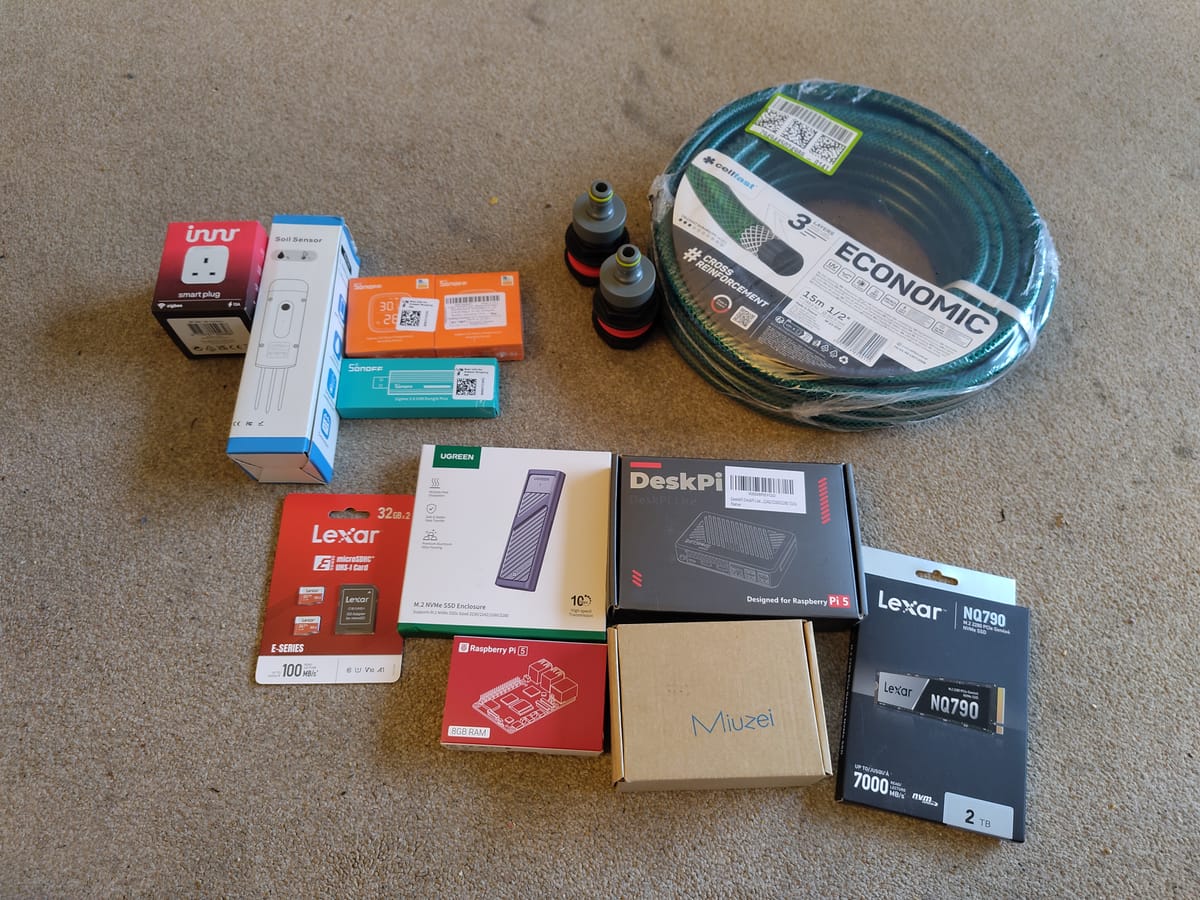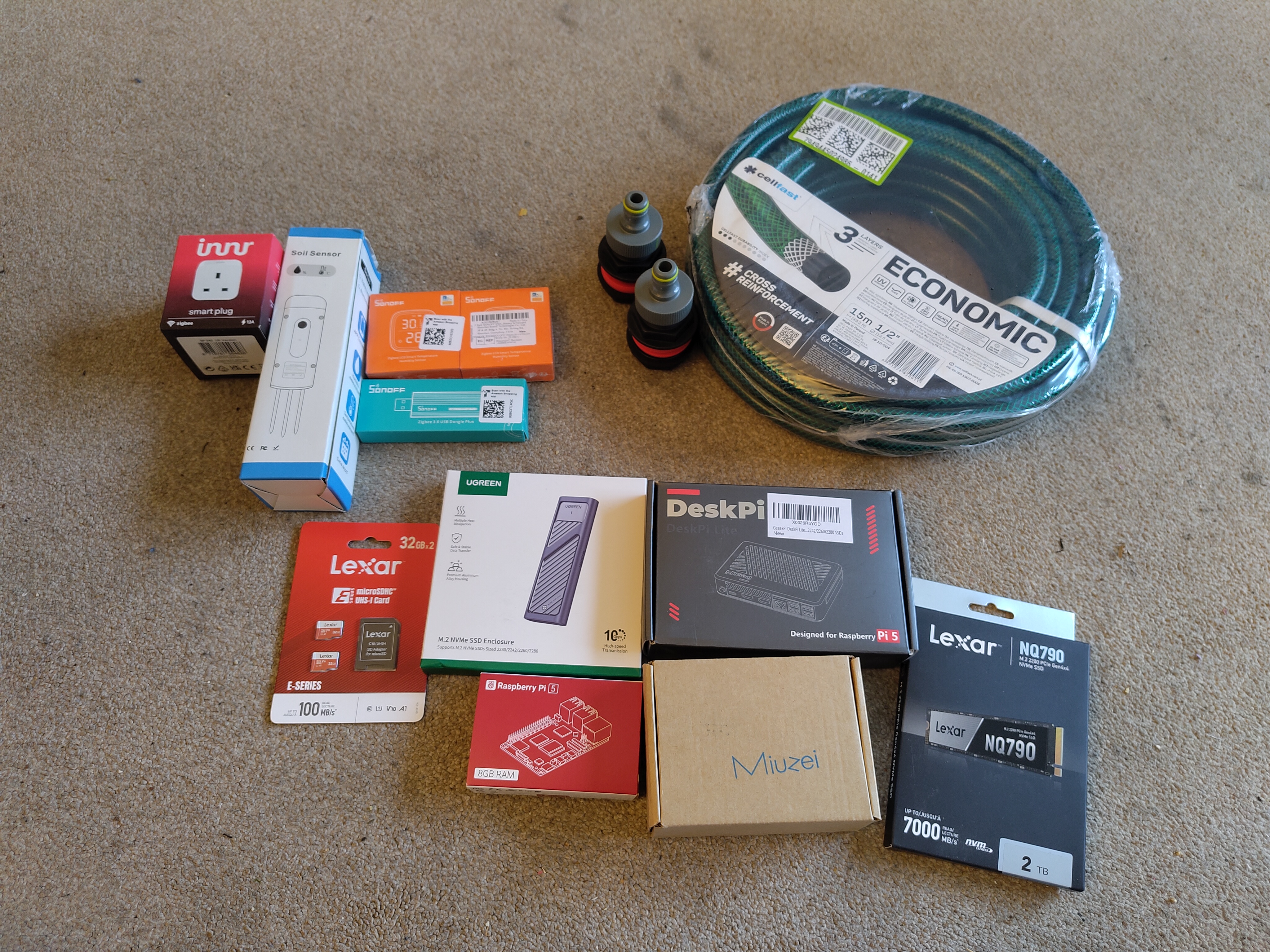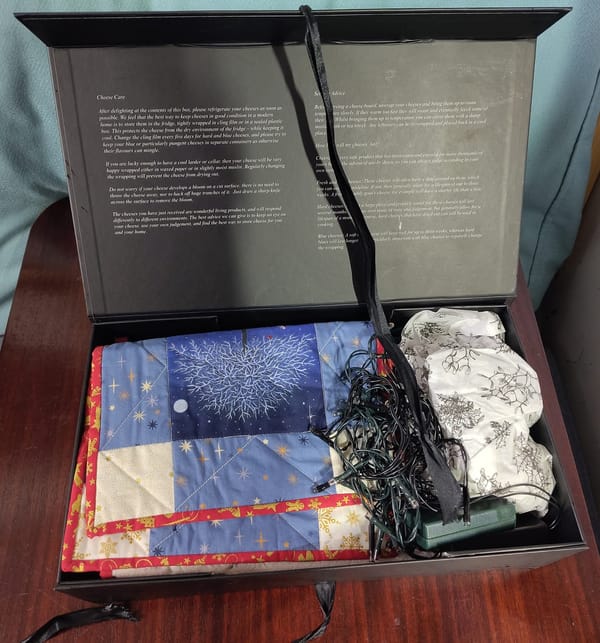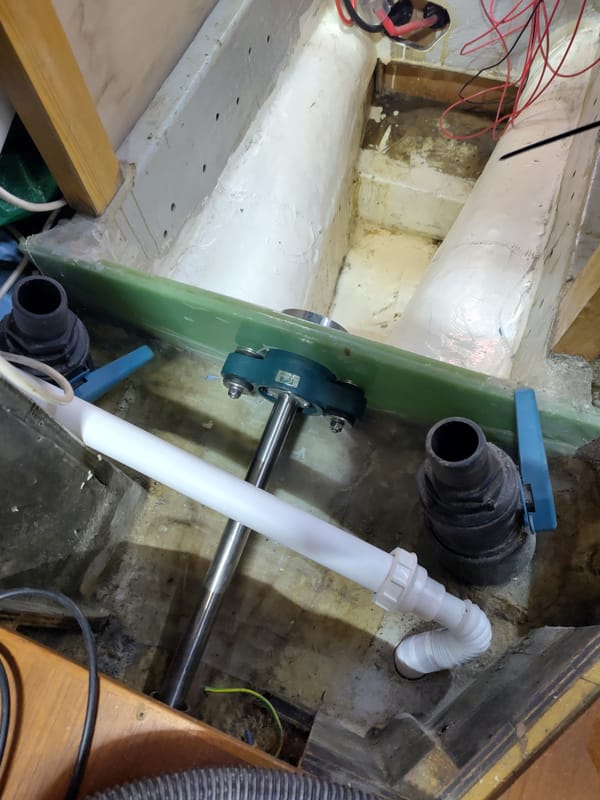Starting towards a Smart boat

We've found the Smart Boat Innovations YouTube channel really helpful and encouraging. The technique of bringing boat data into Home Assistant is absolutely brilliant. It gets us away from expensive Marine technology into the world of free/open source software and standards.
So I'm taking our first (small) steps into this with this pile of goodies:

My first goal is to control the heat treatment of the solids from our Natures Head "Composting" toilets. We can't "compost" properly as we will never have the space or materials to add enough extra carbon or liquid to the very nitrogen rich septage that is needed for the composting process to generate enough heat. From https://humanurehandbook.com/downloads/Cornell_Humanure_10_2013.pdf
Complete pathogen destruction is
guaranteed by arriving at a temperature
of 62° C (143.6° F) for one hour, 50° C
(122° F) for one day, 46° C (114.8° F)
for one week or 43° C (109.4° F) for one
month. It appears that no excreted
pathogen can survive a temperature of
65° C (149° F) for more than a few
minutes.
As we can't rely on the composting process for heat, our goal is to artificially heat the septage to the point where we can be confident that there are no pathogens.
That's what this kit is for (well most of it will be used for many other projects too).
We are using a Raspberry Pi 5 to run Home Assistant (this will later be the heart of all our smart stuff).
I've bought a DeskPi Lite case for the Pi5. I chose that as it supports an M.2 NVME SSD for storage but puts it alongside the Pi5 rather than above or below it. This seems a good solution for better control of heat. Plus it gets us full size HDMI ports, all the connections on one side for easier wiring, and is plastic to allow the better WiFi and Bluetooth signals.
The sensor and control for the heater (which initially will be the food warming tray that we have been using for our epoxy resin) use the ZigBee standard to communicate so we have a Soil Sensor (temp and moisture), a smart plug (to turn the heater on/off as needed to maintain the temperature we want), and a USB Zigbee dongle for the Pi5.
I'm going to add ventilation to the storage box using hosepipe and tank connectors.
Then we have a couple of room thermostats, initially for information only. But later we will build automations for all our heater sources that will adapt to battery state of charge, whether we are sailing or at anchor etc.




